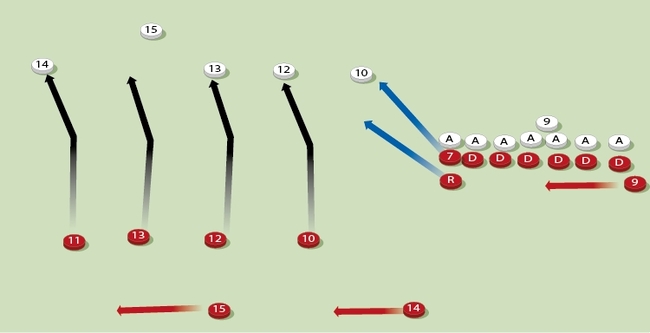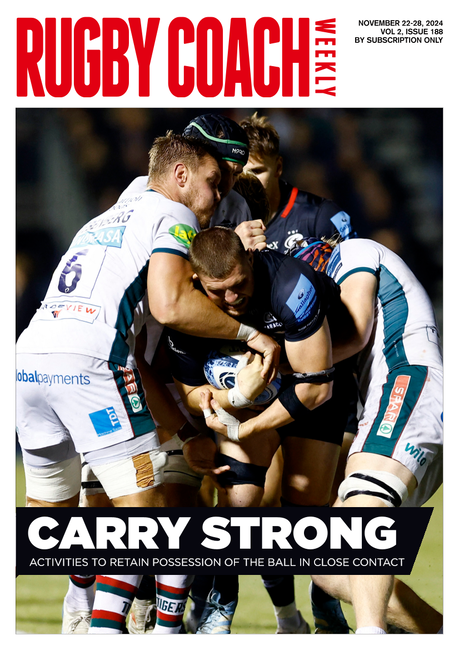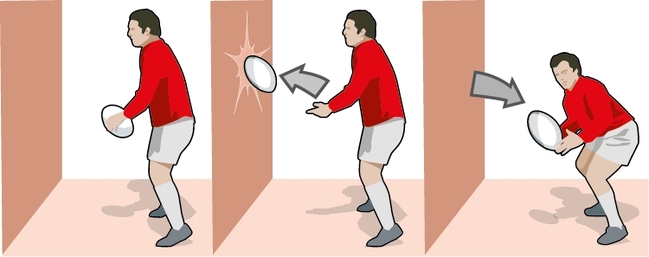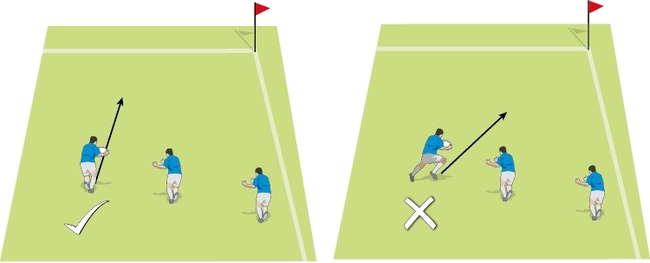Don't carry the teddy bear
RCW editor Dan Cottrell adds more context to two practices.
I’m always keen to give my players a memorable cue to help them keep good habits.
“Carrying the teddy bear” is one which was given to me by former Super Rugby coach, Richard Graham.
He noted that, when his players held the ball under the armpit, like it was their favourite cuddly toy, it was easier for opposition defenders to clamp on to it. Instead, he preferred his players to have the ball on the chest.
Now, this might seem strange, because the ball is even closer to the defender. One might argue that, if the attacker turns into contact, the ball at the side is easier to protect than on the chest. However, let’s consider the detail.
A ball carrier wants to be in the strongest body position, in contact. A tight-head prop will quickly show you that this has the hips and shoulders up the pitch, and chest towards the ground.
Give a player a ball in this situation and they can see the relative merits of side or chest change. A ball at the side is still exposed. A ball on the chest is almost impossible to grab because it’s effectively under the player.
So, the sequence for the ball carrier is this:
- Manipulate the ball onto the chest just before contact.
- Lean forward, with the hips and shoulders facing up the pitch.
- Drive forward, pump feet through contact.
- If tackled, go to ground, landing on top of the ball. From that position, the tackler or other defenders don’t have immediate access to the ball.
- Now place the ball back.
You can see how I’ve put this into a session, here. First, I concentrate on that technique, and then I see if the players can put it into a game situation.
You may also see that I have encouraged the ball carrier to attack just the one defender, rather than go between the defenders.
That’s because it avoids the ball carrier being double tackled. They more easily protect the ball if they are dealing with just one defender.
Grab-ball touch
A good way to encourage more ball manipulation is to play ’grab-ball touch’.
If a player is grabbed, and they can’t get to ground without a defender still holding on to the ball, then it’s a turnover. If they are grabbed and can still pass the ball, that’s fine.
However, if the ball is ripped away, or it can’t be placed properly, or they are held for more than, say, three seconds, then they have failed to manipulate the ball well enough.
Connecting in defence
In this ’Ask Dan!’ question, I was asked how to improve defence from set pieces – in other words, how to connect the forwards to the backs at scrums and lineouts.
We can all recognise that the best systems are often the simplest systems. Players know their roles, and, if there’s any disruption, players can quickly adjust.
I think the challenge is to put these systems to the test before you reach matchday.
Unless you are extremely lucky, it’s unlikely you are going to have two teams at training to face up to each other. So, here’s an idea to solve that potential problem:
- Split your team in half. Set up a ’scrum’, with two groups of forwards (4v4?) on their knees, facing each other, and the two back lines (4v3?) lined up in attack and defence. The touchline is represented by the position of the furthest attacker.
- The attack runs a play from that scrum.
- Play grab tackling. That means, if the ball carrier is grabbed, they have a second to pass the ball. This encourages defenders to get in front of their intended target, and reduces lazy defending.
- Run a couple of attacks and then swap players around.
- Run the same type of scenario from a lineout.
Top tip
Make the distances between attack and defence the same as that set piece.
The defending backs must be 5m behind the back foot of a scrum for example. The back row shouldn’t be allowed to run through where a scrum should be.
Mix in all the players, not just the back row. This helps all the players understand their roles, should substitutions or injuries disrupt your team on matchdays.
Related Files
Newsletter Sign Up
Coaches Testimonials

Gerald Kearney, Downtown Las Vegas Soccer Club

Paul Butler, Florida, USA

Rick Shields, Springboro, USA

Tony Green, Pierrefonds Titans, Quebec, Canada
Subscribe Today
Be a more effective, more successful rugby coach
In a recent survey 89% of subscribers said Rugby Coach Weekly makes them more confident, 91% said Rugby Coach Weekly makes them a more effective coach and 93% said Rugby Coach Weekly makes them more inspired.
Get Weekly Inspiration
All the latest techniques and approaches
Rugby Coach Weekly offers proven and easy to use rugby drills, coaching sessions, practice plans, small-sided games, warm-ups, training tips and advice.
We've been at the cutting edge of rugby coaching since we launched in 2005, creating resources for the grassroots youth coach, following best practice from around the world and insights from the professional game.











